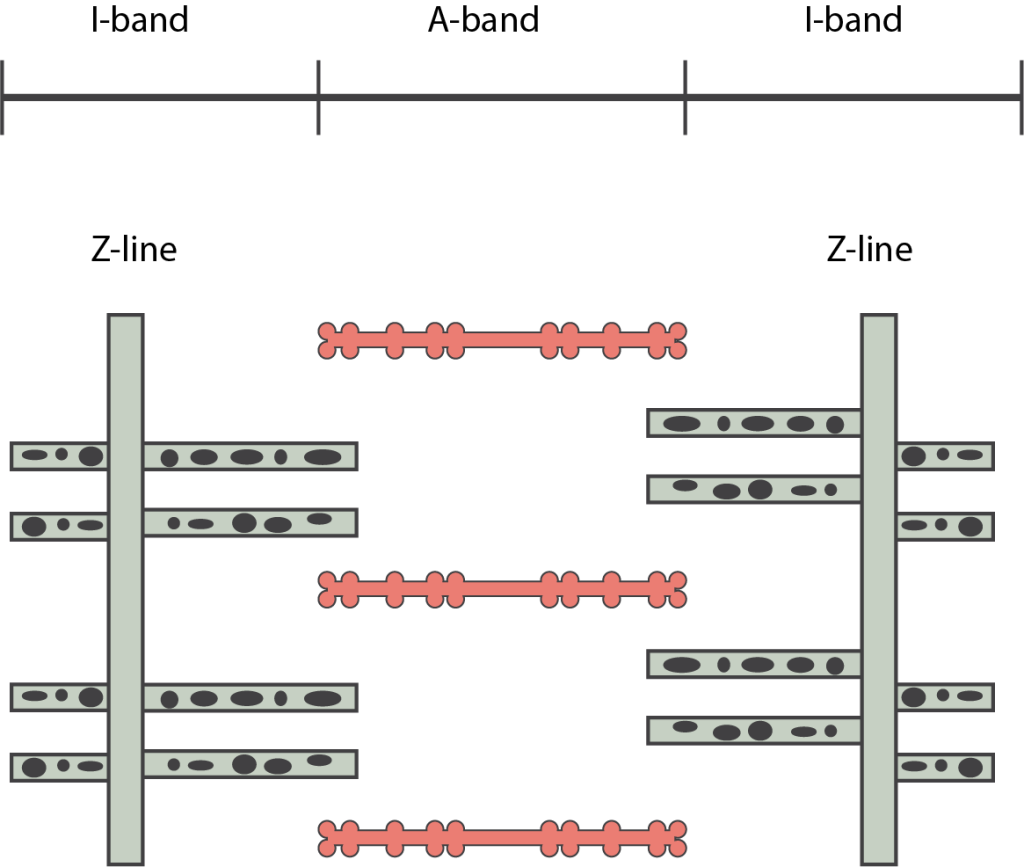The Muscular System (TM)
The Muscular System
Types of Muscle
The muscular system is composed of muscles that move the body, support bodily functions, and circulate blood. The human body contains three types of muscles. Skeletal muscles are voluntarily controlled and attach to the skeleton to allow movement in the body. Smooth muscles are involuntary, meaning they cannot be consciously controlled. Smooth muscles are found in many organs and structures, including the esophagus, stomach, intestines, blood vessels, and bladder. Finally, cardiac muscles, found only in the heart, are the involuntary muscles that contract the heart in order to pump blood through the body.
Some skeletal muscles, such as the diaphragm and those that control blinking, can be voluntarily controlled but usually operate involuntarily.
Muscle Cell Structure
The main structural unit of a muscle is the sarcomere. Sarcomeres are composed of a series of muscle fibers, which are elongated individual cells that stretch from one end of the muscle to the other. Within each fiber are hundreds of myofibrils, long strands within the cells that contain alternating layers of thin filaments made of the protein actin and thick filaments made of the protein myosin. Each of these proteins plays a role in muscle contraction and relaxation.

Muscle contraction is explained by the sliding filament theory. When the sarcomere is at rest, the thin filaments containing actin are found at both ends of the muscle, while the thick filaments containing myosin are found at the center. Myosin filaments contain “heads,” which can attach and detach from actin filaments. The myosin attaches to actin and pulls the thin filaments to the center of the sarcomere, forcing the thin filaments to slide inward and causing the entire sarcomere to shorten, or contract, creating movement. The sarcomere can be broken down into zones that contain certain filaments.
- The Z-line separates the sarcomeres: a single sarcomere is the distance between two Z-lines.
- The A-band is the area of the sarcomere in which thick myosin filaments are found and does not shorten during muscular contraction.
- The I-band is the area in the sarcomere between the thick myosin filaments in which only thin actin filament is found.
The H-zone is found between the actin filaments and contains only thick myosin filament.

Pathologies of the Muscular System
Injuries to muscle can impede movement and cause pain. When muscle fibers are overstretched, the resulting muscle strain can cause pain, stiffness, and bruising. Muscle cramps are involuntary muscle contractions (or spasms) that cause intense pain.
Muscle fibers can also be weakened by diseases, as with muscular dystrophy (MD). MD is a genetically inherited condition that results in progressive muscle wasting, which limits movement and can cause respiratory and cardiovascular difficulties.
Overstretching a ligament is called a sprain.
